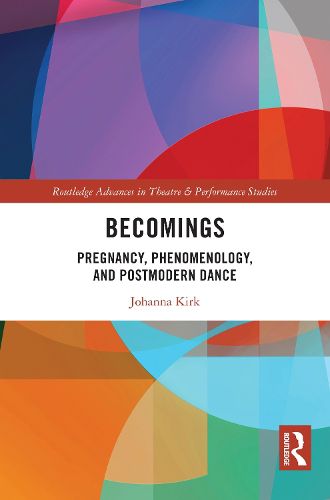Readings Newsletter
Become a Readings Member to make your shopping experience even easier.
Sign in or sign up for free!
You’re not far away from qualifying for FREE standard shipping within Australia
You’ve qualified for FREE standard shipping within Australia
The cart is loading…






This book explores postmodern choreographic engagements of pregnant bodies in the US over the last 70 years.
Johanna Kirk discusses how choreographers negotiate identification with the look of their pregnant bodies to maintain a sense of integrity as artists and to control representations of their gender and physical abilities while pregnant. Across chapters, the artists discussed include Anna Halprin, Trisha Brown, Twyla Tharp, Sandy Jamrog, Jane Comfort, Jody Oberfelder, Jawole Willa Jo Zollar, Miguel Gutierrez, Yanira Castro, Noemie LaFrance, and Meg Foley. By presenting their bodies in performance, these artists demonstrate how their experiences surrounding pregnancy intersect not only with their artform and its history but also with their personal experiences of race, gender, and sexual identification. In these pages, Johanna Kirk argues that choreography offers them tools that are alternative to medicine (or other forms of social representation) for understanding what/how pregnant bodies do and feel and what they can mean for individuals and their communities. The works within these chapters invite readers to see dancing bodies and pregnant bodies in new ways and for their potential to manifest new possibilities.
This study will be of great interest to students and scholars exploring dance, theatre and performance, race, and gender.
$9.00 standard shipping within Australia
FREE standard shipping within Australia for orders over $100.00
Express & International shipping calculated at checkout
This book explores postmodern choreographic engagements of pregnant bodies in the US over the last 70 years.
Johanna Kirk discusses how choreographers negotiate identification with the look of their pregnant bodies to maintain a sense of integrity as artists and to control representations of their gender and physical abilities while pregnant. Across chapters, the artists discussed include Anna Halprin, Trisha Brown, Twyla Tharp, Sandy Jamrog, Jane Comfort, Jody Oberfelder, Jawole Willa Jo Zollar, Miguel Gutierrez, Yanira Castro, Noemie LaFrance, and Meg Foley. By presenting their bodies in performance, these artists demonstrate how their experiences surrounding pregnancy intersect not only with their artform and its history but also with their personal experiences of race, gender, and sexual identification. In these pages, Johanna Kirk argues that choreography offers them tools that are alternative to medicine (or other forms of social representation) for understanding what/how pregnant bodies do and feel and what they can mean for individuals and their communities. The works within these chapters invite readers to see dancing bodies and pregnant bodies in new ways and for their potential to manifest new possibilities.
This study will be of great interest to students and scholars exploring dance, theatre and performance, race, and gender.